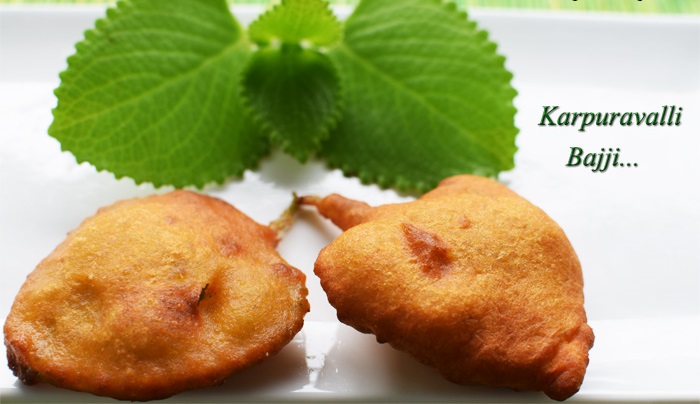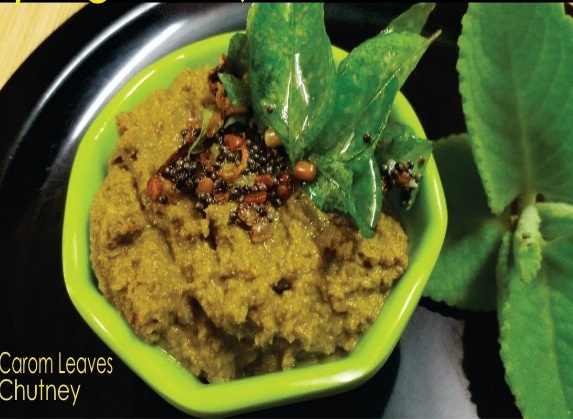Ajwain- a caram seed
{Content:- What is Ajwain seed, common name, Characteristic, About its plant & Cultivations, Plant characteristic, flavor profile of ajwain seed, cooking technique, use of ajwain leaf in cooking, Ayurvedic properties & popular brand name of ajwain seed in india.}
What is Ajwain seeds?
Caram seeds are commonly known as Ajwain in India, are a spices commonly used in Indian & Middle Eastern cuisine. It is basically the dried fruit of the ajwain plant and not the seed of ajwain plant. It comes from the Trachyspermum ammi plant, which is a member of the Apiaceae family, the same family that includes cumin, coriander, and fennel. The dried fruit is ridged and have a dark green/khaki colour, which looks very similar to cumin that is why it sometimes also known as Ethiopian cumin.

Pic source:-https://in.images.search.yahoo.com/search/images;_ylt=AwrKAJe6TLhmeJQvBg27HAx.;_ylu=Y29sbwNzZzMEcG9zAzEEdnRpZAMEc2VjA3BpdnM-?p=ajwai
Common name of Ajwain
It is believed that the Hindi word ajvan comes from Sanskrit yavanaka or yavani. The Indian name of Ajwain Seeds was transferred to Ethiopia as azmud. However, Ajwain is termed netch azmud, while tiqur azmud means nigella. The scientific name of Ajwain Seeds is Trachyspermum ammi.
- Ajwain or Ajowain (अजवाइन, अजवान, अजवायन) in Hindi & Urdu
- Tamil: Omam (ஓமம்)
- Telugu: Vamu (వాము)
- Kannada: Oma (ಓಮ)
- Malayalam: Ayamodakam (അയമോദകം)
- Gujarati: Ajmo (અજમો)
- Marathi: Ova (ओवा)
- Bengali: Jowan (জোয়ান)
- Punjabi: Ajwain (ਅਜਵਾਇਨ)
- Odia: Juani (ଯୁଆନି)
- Assamese: Joaan (জোৱান)
- Caraway seed or Ethiopian cumin in English
- Moreover, in France, Italy, Germany, and Spain, this herb is known as Ajowan.
- Appearance: Ajwain seeds are small, oval-shaped, and ridged. They are typically grayish-brown in color.
- Flavor: Ajwain seeds have a strong, pungent flavor that is often compared to thyme due to their earthy, slightly bitter, and peppery taste. The flavor is quite potent, so a little goes a long way.
- Aroma: The seeds have a strong, spicy aroma that is somewhat similar to thyme and oregano, but more robust. When heated, the aroma becomes more pronounced.
- Texture: Ajwain seeds are hard and can be crunchy when chewed. They are small but have a potent flavor, so a little goes a long way in cooking.
About its plant & cultivation status-

The Scientific name of the Ajwain plant is Trachyspermum ammi which belong to the herbaceous plant in the Apiaceae family. It is like same as corriander, cuimin & fennel plant as they all belong to the Apiaceae family.
It is an annual herb plant and believe that it was originated in the Egypt and some area of eastern Mediterranean region. It is still extensively cultivated along the riverside of the Egypt area which have suitable soil & weather conditions for its growth. However, it also grown in abundance in the countries like India, Pakistan, Afghanistan & Iran etc.which is a native to Egypt but widely grown in India, Iran, Iraq, Pakistan & Afghanistan.
India is a leading producer of ajwain seed, the major ajwain producing states in india are- Andhra Pradesh, Gujrat, Madhya Pradesh, Rajasthan, Uttar Pradesh, Bihar, West Bengal etc. its plant can grow in all type of soil but best suited soil is loamy soil or well drained soil.
Plant Characteristics:
- Appearance:
- Height: The ajwain plant is a relatively small, annual herb that grows to about 30–60 cm (12–24 inches) in height.
- Leaves: It has finely divided, feathery, and green leaves that are somewhat similar in appearance to those of cilantro.
- Flowers: The plant produces small, white or pale pink flowers arranged in umbels, which are clusters of flowers that radiate from a central point.
- Seeds:
- Formation: The seeds, which are the most commonly used part of the plant, develop from the flower clusters. They are small, oval, and have a ridged surface.
- Harvesting: Ajwain seeds are typically harvested when the plant’s flower clusters have turned brown and dry.
- Cultivation:
- Climate: Ajwain thrives in warm climates and is often grown in regions with a hot and dry climate. It is commonly cultivated in India, Iran, and parts of the Mediterranean region.
- Soil: The plant prefers well-drained, sandy loam or loamy soil. It requires moderate watering and can tolerate dry conditions once established.
- Sunlight: Ajwain needs full sunlight to grow well, making it suitable for sunny garden locations
Flavour profile of Ajwain:-
Ajwain has a very strong thyme like flavour which mainly comes from Thymol. Thymol is an essential oil found in it. Ajwain is more sharp and pungent in flavour than thyme. Its unique bite is a great way to add very complexity and interest to the aromatic base of a curry or as a finishing tarka, in which spices are briefly fried in hot oil or butter before being poured on a finished dish, just before serving.
Flavor Profile:
- Pungency: Ajwain seeds are known for their strong, pungent flavor. This intense taste is often described as being somewhat bitter and spicy.
- Thyme-Like: The flavor of ajwain has a similarity to thyme, which is partly due to the presence of thymol, a major compound in the seeds. Thymol contributes to the herb’s aromatic and slightly peppery notes.
- Peppery: There’s a noticeable peppery heat in ajwain seeds, adding a sharp spiciness to dishes.
- Earthy: The seeds also have earthy undertones, giving them a robust and somewhat musky flavor that can be quite strong if used in large amounts.
- Bitterness: Alongside the spiciness, ajwain seeds have a bitter edge, which can add complexity to dishes when used judiciously.
Cooking technique of Ajwain
Ajwain doesn’t require to be fried before using it rather it should be dry-roasted to excite its flavors before use.
Here are some common cooking techniques that incorporate ajwain:
1. Used in Tempering (Tadka)
- Usage: Ajwain is often used in the tempering process to flavor oils before they are added to a dish.
- Technique: Heat oil or ghee in a pan, add ajwain seeds, and let them sizzle for a few seconds until they release their aroma. Once the seeds turn slightly brown, they are ready to be used. This tempered oil can be added to dals, curries, or vegetables.
- Ajwain flavour matches well with potatoes, lentils and beans and leafy vegetables. Simple vegetable dishes can also be flavoured with Ajwain by frying it in butter. Because of its typical dominant flavour, it should be used in small quantities and always used cooked as it mellows a little with cooking.
2. Used in Baking
- Usage: Ajwain is a popular ingredient in Indian breads, like parathas, and snacks like biscuits or crackers.
- Technique: Ajwain seeds can be mixed into the dough of flatbreads or sprinkled on top before baking. The heat from the oven enhances the flavor of the seeds, giving the baked goods a distinct taste.
3. Used as a Spice Mixture
- Usage: Ajwain is often ground into spice blends like garam masala or added to spice mixes for pickling.
- Technique: Lightly roast ajwain seeds in a dry pan until aromatic, then grind them with other spices to make a spice blend. This adds a unique flavor to the mix.
4. In Curries and Gravies
- Usage: Ajwain can be added directly to curries or gravies for flavor.
- Technique: Add ajwain seeds to the hot oil at the beginning of the cooking process, followed by other spices and ingredients. It pairs well with cumin, coriander, and turmeric.
5. Infusion
- Usage: Ajwain can be infused in water to make a digestive tea or used in other liquid-based dishes.
- Technique: Boil ajwain seeds in water for a few minutes to extract the flavor. Strain the seeds out, and use the infused water as a base for soups, stews, or as a digestive drink.
6. Used in Pickling
- Usage: Ajwain is commonly used in pickling, especially in Indian cuisine.
- Technique: Ajwain seeds are added to pickling spices and mixed with vegetables or fruits to create flavorful pickles. The strong flavor of ajwain helps in preserving the pickles while adding a unique taste.
Do we use Ajwain Leaf (Doddapatre) in cooking:-
Yes off course, Ajwain leaves is locally knows as Omavalli or Karpooravalli in Tamil & doddapatre or sambarpalli in Kannada, Panikoorka in Malayalam, and Indian borage in English, are commonly used in cooking, particularly in South Indian cuisine.
- The leaves have a strong, aromatic flavor similar to the seeds but with a slightly milder taste.
- Ajwain leaves are also used in cooking as a substitute for oregano herbs. The ajwain leaves can be used in salads, rasams, bhajji, and flavour for other dishes.
- Ajwain leaves are used to make flavourful pakora called omavalli bajji or karpuravalli bajji in Tamilnadu. Its leaf is dipped in gram flour & rice flour batter(besan batter) & deep fried.
- Its leaf is beautiful musty herbs having a typical aroma like camphor and also used as an important medicinal herb for cough, cold, sour throats and related illness.


Pic courtesy-healthkiddo
- Fresh Ajwain leaves are also used to prepare chutney in south india called omavalli chutney or karpuravalli chutney which is often tempered with mustard seed, red chilly whole & curry leaves and can be eaten with pakora, chips, crisps or even with paratha.
- Dips can also be prepared by sautéing the fresh ajwain leaves & then grinded with garlic and local spices and mixed with curd to prepare the dips.

Pic courtesy- My cooking journey
Culinary use of Ajwain or carom seed:-
Ajwain (carom seeds) is a versatile spice with a distinctive aroma and strong, pungent flavor. It’s commonly used in Indian, Middle Eastern, and North African cuisines. Here are some of the culinary uses of ajwain:
(1) As a Flavoring in Breads & Bakery products:- Ajwain is often added to doughs for bread, parathas, and pastries. Examples are:-
- Parathas: Ajwain is mixed into the dough or sprinkled on top of Indian flatbreads like parathas, adding a subtle, savory taste.
- Ajwain or Carom seeds are extensively used in parathas, puris, chilla (lentil pan cakes),roti, Naan,Missi roti, Rajasthani roti etc and it is also often added in the gram flour batter which is used for the preparation of several variety of pakora, bhajia ,fafda etc.
- Nankhatai: Indian shortbread cookies that sometimes include ajwain for added flavor.
- Ajwain seed are mainly used to flavour many bakery puff & biscuit items, bread and namkins such as cheese straw, ajwaini puff, vol-au-vent, breads & paratha, matthi or Namkins, samosa etc.
(2) In Tadka or Tempering of Dals & Curries:- Ajwain seeds are used in tempering, where they are briefly fried in hot oil or ghee to release their flavor. Examples:
- Dals and Lentil Dishes: Tempering with ajwain is often done at the beginning or end of cooking lentils, enhancing their flavor.
- Vegetable Curries: Ajwain is added to oil before sautéing onions and other vegetables.
(3) In Masala:-Ajwain is included in various spice blends for its unique flavor. Examples:
- Garam Masala: A traditional Indian spice mix that sometimes includes ajwain.
- Chaat Masala: A tangy spice blend used in Indian street foods.
- Ajwain can be combined with other spices such as turmeric, paprika, cumin, black pepper, fennel and coriander.
(4) Used in Pickling:- Ajwain is a common ingredient in pickles, especially in Indian cuisine. Examples:-
- Mango Pickle: Ajwain is used along with other spices like mustard seeds and fenugreek to flavor pickled mangoes.
- Lemon Pickle: Adds a pungent flavor to preserved lemons.
- Ajwain are highly incorporated for making various salad dressings & salads
(5)Used in digestive drinks:- Ajwain is often consumed for its digestive properties. Examples:
- Ajwain Water (Omam Water): Ajwain seeds are boiled in water to make a digestive drink, which is often consumed after meals.
- Ajwain with Salt: A small amount of ajwain mixed with salt is sometimes chewed after meals to aid digestion.
(6) Snacks and Savories:-: Ajwain is used to flavor snacks and savory dishes. Examples:
- Pakoras and Bhajiyas: Indian fritters made from vegetables or lentils often include ajwain in the batter.
- Mathri: A popular Indian snack made from spiced dough, which includes ajwain, rolled into small discs and deep-fried.
(7) Used in Curries and Gravies:- Ajwain is added to curries to enhance the overall flavor. Examples:
- Rajma (Kidney Bean Curry): Ajwain is sometimes added during the cooking process to complement the other spices.
- Aloo Ajwain (Potato Curry): A simple curry made with potatoes, where ajwain plays a key role in flavoring.
(8) Used in Soup and Stews: Ajwain can be added to soups and stews for added flavor.
- Examples:
- Yogurt-Based Soups: In some Indian soups like kadhi, ajwain is used for its digestive benefits and flavor.
- Vegetable Stews: Ajwain adds a warming, aromatic touch to hearty stews.
(9) Herbal Remedies and Teas: Ajwain is used in herbal teas for its medicinal properties. Examples:
- Ajwain Tea: Boiling ajwain seeds in water creates a tea that helps with colds, coughs, and indigestion.

Pic source-depositphotos
Ayurvedic properties of Ajwain seed:-
Ajwain, also known as carom seeds, has been extensively used in Ayurveda for its numerous health benefits. The seeds are considered to have Vata and Kapha dosha pacifying properties, and they are widely recognized for their digestive, carminative, and antimicrobial properties. Here’s how ajwain is used in Ayurvedic practices:
- According to ayurveda, it is a powerful herbs used for cleanser. It is very helpful for stimulating the appetite and increasing the digestion of food such as a pinch of ajwain seed can be added to the buttermilk for making salty lassi or chaach which promotes easy digestion if taken after meal.
- It helps to dis-alleviate gas and make it comfort in the stomach. It is also helpful for the functioning of the respiratory system and the kidneys.
- Ajwain is helpful for pacifying Vata and Kapha, and increases Pitta. It contributes the pungent taste, with a slight bitter undertone.
- Ajwain seeds are rich in minerals, fiber, vitamins, and antioxidants. Carom seeds are a potent antimicrobial (contains about 50% thymol), carminative, antispasmodic, diaphoretic, diuretic, and energizer.
Popular brand of Ajwain in india:-
There are many popular brands or company selling ajwain seed in Indian market. The price range of ajwain seed in Indian market are in the range between Rs 400/- to Rs 1000/- per kg depending upon the quality, brand names & organic variety .
Some popular brand names in Indian market selling ajwain seed are:-
- More choice super caram seed
- Vasant ajwain
- Chataka ajwain
- Patanjali caram seed
- Exotica natural & fresh ajwain
- RR Agro food premium ajwain
- Arya farm ajwain
- Vedika ajwain
- Mother organic ajwain
- Wonderland caram seed
- Jai Jitender ajwain
- Chuk-de ajwain sabut
- TRH Ajwain
- Marwar premium ajwain
- Satvyk organic ajwain
- Salz & aroma caram seed
- Nature vit ajwain
- Aagam fresh organic ajwain

Content Reference:-
The prime moto while preparing the above content is to educate the students who are pursuing carrier in Hospitality & food trade, Hoteliers, chefs, Hotel Management faculty members, Housewife’s etc. The above content has been compiled after referring various culinary books, Research Papers, Research articles, Food magazines, news papers, top culinary websites, Govt websites, personal interaction with renowned chefs from various hotel brands like The Ashok Group of hotel, ITC, Oberai, Leela, Park Hotels & various IHM Faculties, Nutritionists etc. & many more. Some of the important website referred for the above content are:-
- https://www.thespruceeats.com/carom-seeds-ajwain-1957879
- https://www.webmd.com/diet/health-benefits-ajwain
- https://www.keralaayurveda.biz/blog/ajwain-plant
- https://food.ndtv.com/food-drinks/9-super-benefits-of-ajwain-the-multi-talented-household-spice-1438699
- https://indianculture.gov.in/food-and-culture/spices-herbs/incredible-ajwain
- https://gitaayurvedic.com/blogs/news/ajwain-carom-seeds-benefits-side-effects-and-uses
- https://www.businessinsider.in/science/health/food/ajwain-seeds-what-is-its-nutritional-value-health-benefits-and-uses-of-ajwain-seeds/articleshow/103066131.cms
- https://www.archanaskitchen.com/ajwain-carom-seeds
- https://ndtv.in/food/ajwain-leaves-culinary-and-medicinal-uses-of-these-flavourful-leaves-hindi-2004419
- https://www.researchgate.net/publication/262001210_An_Overview_on_Ajwain_Trachyspermum_ammi_Pharmacological_Effects_Modern_and_Traditional
- science direct
- Amazon
